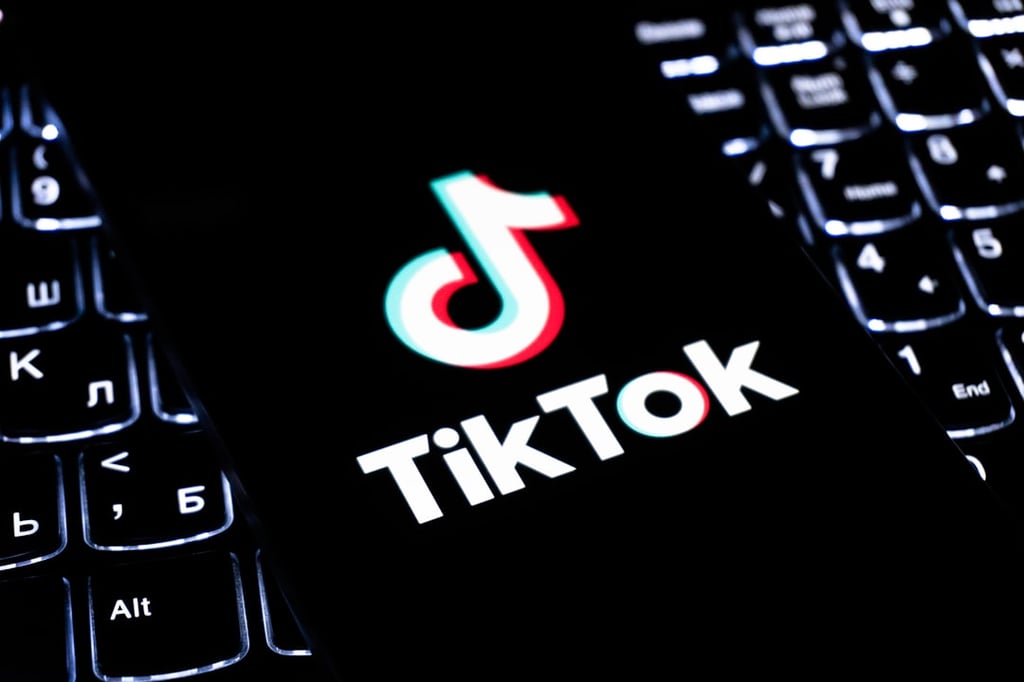Datamation content and product recommendations are
editorially independent. We may make money when you click on links
to our partners.
Learn More
Sure, you could pay for Wi-Fi, but follow these tips and you may not have to.
Like most commodities, Wi-Fi is usually available if you’re willing to pay for it. But if you’d just as soon not have to ante up a monthly, daily, or hourly charge, here are some ways you can scare up Wi-Fi access gratis.
1. Hit the books
Public libraries may be best known for providing access to information in dead tree format, but books aren’t the only things they offer. Many libraries, such as those in New York City, Miami-Dade, FL, and Contra Costa County, CA–or even small towns, such as Northampton, MA–offer free Wi-Fi for visitors. Another place with lots of books and the potential for free Wi-Fi is the local college campus–check the student union and other spots for a signal when you visit.
2. Pull up stakes
Municipal Wi-Fi networks are an endangered species these days, and ones that don’t charge for access are even more so. But free city-wide (or close to it) Wi-Fi does still exist. Some towns like Ponca City, OK and St. Cloud, FL, have Wi-Fi networks for things like automatic meter reading and emergency service use, and they offer free access to residents (coverage is sometimes limited to public areas, though).
If you’re looking for a hipper more urbane milieu, head to San Francisco, where free Wi-Fi is available in much of the city thanks to Maraki’s Free the Net project. [For more on Free the Net, click here.] Meraki products also make it relatively easy and inexpensive to add Wi-Fi to multi-unit dwellings like apartment buildings, so plant a bug in the ear of your property manager or condo board.
3. Trains, planes, and automobiles
Whether you’re traveling cross-country or cross-town, free Wi-Fi is often close by. Comcast high-speed Internet customers can take advantage of free Wi-Fi available at about 100 New Jersey Transit train stations and in surrounding parking lots. Cablevision provides the same service to its customers waiting at Long Island Rail Road platforms, and all LIRR passengers can get Internet access in the LIRR’s New York Penn Station waiting room.
When traveling by air, consider heading to the airport early–or lingering there for a while after arrival–since many offer free Wi-Fi in the passenger terminals. Travelpost.com has a nice rundown of such airports, (along with pricing for those airports that charge for access).
If you’re on a road trip and need to pull over for a bathroom break, check and see if the roadside facilities offer free Wi-Fi. Many highway rest stops, including all 27 Travel Plazas on the New York State Thruway, do. And BP is in the midst of rolling out free Wi-Fi access at its gas stations across North America.
Whatever your mode of travel, if you’re staying in a hotel—or just happen to be close to one—park yourself in the lobby, where Wi-Fi is often free (even when it costs beaucoup bucks in the guest rooms).
4. Take a coffee break or grab a bite
Economic downturn notwithstanding, there are still about a billion Starbucks out there, most of which have hotspots. If you frequently visit Starbucks for your java jolt, pick up one of the company’s stored-value cards, register it online and use it at least once every 30 days to make a purchase or add funds—you’ll get two hours of free Starbucks Wi-Fi access per day (albeit in one contiguous block) for your trouble. Craving more than just coffee? All FirstWatch and Panera locations offer free Wi-Fi, as well.
5. Ask and ye shall receive
Sharemywifi.com hosts a database of about 800 Wi-Fi networks worldwide (mostly in the US and Europe) whose owners are willing to provide access to strangers. Although some owners request a “donation” for network access and others are willing to exchange it for other goods or services, a considerable number of the networks listed on the site will provide access to anyone who asks.
A tool on the site lets you consult a map to locate a network near you and view the owner’s terms for access. Once you find one you want to use, use an e-mail form to contact the owner and request permission to access the network, (and in the case of secure networks, obtain the encryption key).
6. Join the crowd
We-Fi has a million or so users who’ve found more than sixteen million hotspots around the world. Lots of them are free, and you can use the site’s maps to look up open networks near a particular address.
When you install We-Fi’s software (it’s available for Windows and Mac systems as well as Windows Mobile and Nokia S60 mobile phones) it will find and automatically connect you to the best open access point available nearby, and if the wireless networks near you aren’t already in We-Fi’s database, the software will add them for the benefit of other users. We-Fi also lets you know where friends that also use the software are connected, and can update your location when you post to Facebook or Twitter. [Click here for a review.]
7. Share and share alike
With FON’s $30 LaFonera access point, you can create a public hotspot on your wireless network without disturbing the protected and private network you already have. Granted $30 isn’t exactly free, but if you agree to be a “Linus” and provide other FON users with free access to your hotspot (as opposed to “Bills,” who charge for it) you’ll get complimentary access at all other FON hotspots in return. [Click here for a review.]
Whisher works along similar lines, but with software rather than hardware. Make your wireless network available to Whisher users, and you’ll get access to theirs. Whisher’s software is available for Mac and Windows (though the latter version’s not compatible with Vista). [Click here for a review.]
8. Get a gadget
Sometimes right gadget + right place = free Wi-Fi. When you buy an iPhone, your data plan comes with free Wi-Fi access at AT&T hotspots, including those at Starbucks, Barnes & Noble, and McDonalds. The same is true of Sony’s Cyber-shot DSC-G3 camera with built-in Wi-Fi (though you can only use it to upload photos from the camera, not with a PC). The Eye-Fi Explore–a Wi-Fi-enabled 2GB SD card that works with most digital cameras– comes with one year of access at Wayport hotspots.
9. Sniff around
You don’t always have time to fire up the laptop just to see if there’s free Wi-Fi around, but pocket-sized gizmos like the Canary Wireless Digital Hotspotter HS20 will give you a quick read on available networks nearby, their signal strength, and whether or not they’re encrypted. The Wi-Fi capable iPod touch can also be used as a signal finder. [Click here for a review of the HS20. And click here for a review of the iPod touch.]
10. More gain, less pain
When you’re looking for Wi-Fi, but can’t find any open networks around, there may still be a few nearby with signals that are just out of reach. The Wi-Fi adapters built into most notebooks aren’t particularly adept at pulling in weak or distant signals, but a USB-based Wi-Fi adapter with a high-gain directional antenna, like hField’s Wi-Fire or one from Hawking Technologies (it has units that support 11g and 11n, on both Mac and Windows) will give you the ability to cast a wider net in search of access. [Click here for a full Wi-Fire review.]
Whenever you’re trolling for free Wi-Fi, be sure to pay attention to what you’re connecting to. In many public places (especially in airport terminals), scammers with laptops are known to hang around broadcasting peer-to-peer (a.k.a. ad-hoc) networks and hoping to snare inattentive passers-by with come-hither SSIDs like “Free Wi-Fi” or something along those lines. To avoid falling prey to one, take note of the icon next to the network. The icon should depict an antenna (in XP) or a single computer (in Vista) if it shows a pair of computers, it’s an ad-hoc network and you should stay away. [For more detailed help, read “When ‘Free Public Wi-Fi’ is Bad.”]
Finally, remember that whether you pay for access not, Wi-Fi networks are shared; so whenever you use one, you are potentially exposing your computer’s data and your online activities to other users. To protect yourself, be sure to run a software firewall and use VPN software, such as AnchorFree’s Hotspot Shield to encrypt the data you send and receive while connected. A caveat: HotSpot Shield will want to route your searches through its own search engine partner since that’s how they make money (though you can still opt to stick with your own preferred search provider).
This article was first published on Wi-Fi Planet.
-
Ethics and Artificial Intelligence: Driving Greater Equality
FEATURE | By James Maguire,
December 16, 2020
-
AI vs. Machine Learning vs. Deep Learning
FEATURE | By Cynthia Harvey,
December 11, 2020
-
Huawei’s AI Update: Things Are Moving Faster Than We Think
FEATURE | By Rob Enderle,
December 04, 2020
-
Keeping Machine Learning Algorithms Honest in the ‘Ethics-First’ Era
ARTIFICIAL INTELLIGENCE | By Guest Author,
November 18, 2020
-
Key Trends in Chatbots and RPA
FEATURE | By Guest Author,
November 10, 2020
-
Top 10 AIOps Companies
FEATURE | By Samuel Greengard,
November 05, 2020
-
What is Text Analysis?
ARTIFICIAL INTELLIGENCE | By Guest Author,
November 02, 2020
-
How Intel’s Work With Autonomous Cars Could Redefine General Purpose AI
ARTIFICIAL INTELLIGENCE | By Rob Enderle,
October 29, 2020
-
Dell Technologies World: Weaving Together Human And Machine Interaction For AI And Robotics
ARTIFICIAL INTELLIGENCE | By Rob Enderle,
October 23, 2020
-
The Super Moderator, or How IBM Project Debater Could Save Social Media
FEATURE | By Rob Enderle,
October 16, 2020
-
Top 10 Chatbot Platforms
FEATURE | By Cynthia Harvey,
October 07, 2020
-
Finding a Career Path in AI
ARTIFICIAL INTELLIGENCE | By Guest Author,
October 05, 2020
-
CIOs Discuss the Promise of AI and Data Science
FEATURE | By Guest Author,
September 25, 2020
-
Microsoft Is Building An AI Product That Could Predict The Future
FEATURE | By Rob Enderle,
September 25, 2020
-
Top 10 Machine Learning Companies 2021
FEATURE | By Cynthia Harvey,
September 22, 2020
-
NVIDIA and ARM: Massively Changing The AI Landscape
ARTIFICIAL INTELLIGENCE | By Rob Enderle,
September 18, 2020
-
Continuous Intelligence: Expert Discussion [Video and Podcast]
ARTIFICIAL INTELLIGENCE | By James Maguire,
September 14, 2020
-
Artificial Intelligence: Governance and Ethics [Video]
ARTIFICIAL INTELLIGENCE | By James Maguire,
September 13, 2020
-
IBM Watson At The US Open: Showcasing The Power Of A Mature Enterprise-Class AI
FEATURE | By Rob Enderle,
September 11, 2020
-
Artificial Intelligence: Perception vs. Reality
FEATURE | By James Maguire,
September 09, 2020
SEE ALL
ARTICLES







